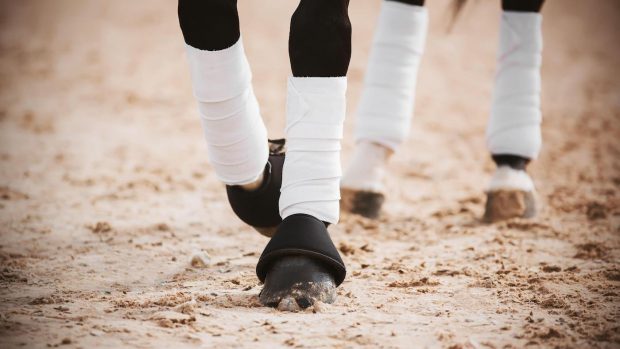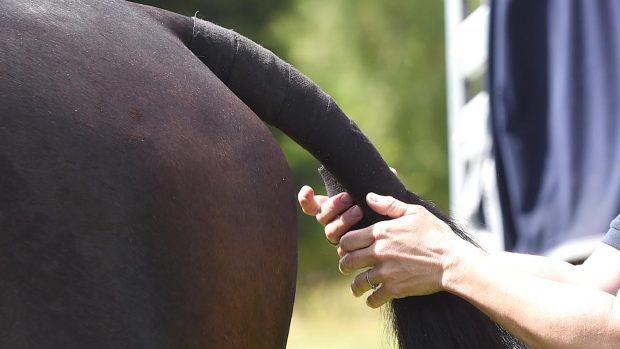Exercise bandages support a horse’s legs, protecting them from knocks when he is in work.
The bandage should be fitted just below the knee or hock, to just above the fetlock joint. There should be padding, such as Fybagee or Gamgee, underneath.
Exercise bandages should not impede the flexion of the horse’s joints and it is vital that the tension is even.
The bandages should be removed straight after work and must not be left on, or unchecked, for long periods.
A step-by-step guide to correct bandaging:
- Check that the Gamgee/Fibagee is the correct size.
- Starting on the inside or the outside, wrap the chosen padding smoothly round the leg, working from front to the back, finishing on the outside.
- Start bandaging from the top of the padding with the bandage facing front to back and leaving a spare tab of approximately 3ins above the padding.
- After the first turn of the bandage, fold down the tab and do the second turn over the top to secure the end.
- Continue down the leg covering approximately two-thirds of the preceeding turn of bandage each time. Keep the pressure even all the way down and ensure there are no wrinkles in either the bandage or the padding.
- Take the bandage to the level of the ergot (the adding may be half an inch below this), then return up the leg leaving an inverted “V” at the front of the fetlock joint where the bandage crosses itself as it changes direction. Return up the leg, maintaining the same pressure.
- Keeping the ties flat, wrap them around the leg ensuring they are not tighter than the bandage. Secure with a reef knot on the outside of the leg, never on the bone in front or the tendon at the back.
- Fold top half of last turn of bandage down to cover the knot. For competition, secure bandage with three strips of tape, taking care not to pull the tape too tightly across the tendon.
- For greater security, sew the bandage in place. Use cross-stitch and make sure all the layers of the bandage are sewn.




